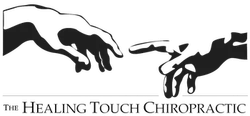A 30-year-old mom bends over to pick up her four-year-old and feels a sharp stabbing pain in her lower back. A 60-year-old man bends over to pick up his five-year-old grandchild and feels an electrical shooting pain in his lower back. For both, the pain is so severe they need to sit down.
The next day, both the mom and the grandfather notice they now have pain and numbness radiating down one leg, and they are having trouble walking.
What's going on, how did it happen, and what can be done about it?
First of all, a little basic anatomy is useful. Spinal discs are weight-bearing shock absorbers. They contain a gel-like ball-bearing center, which is surrounded by tough fibrous cartilage, arranged in concentric, criss-crossing circles.1
As a person gets older, the discs naturally lose some of their water content, and cracks and fissures naturally develop in the fibrous cartilage. If a weight-bearing stress is unusual and unexpected, the gel-like material in the center of the disc can push through one of the fissures and possibly irritate a spinal nerve.
If enough of this material pushes through, the nerve can become inflamed and cause symptoms such as radiating pain and/or numbness, and possibly weakness, in one leg.
Typically, such pain and/or numbness radiates down the leg, traveling below the knee and possibly into the foot.
Such symptoms, with or without back pain, are highly suggestive of an inflamed spinal nerve. In fact, the person will usually say the leg symptoms are much worse and of greater concern than any back pain that may be present.
If the MRI confirms the disc herniation and suggests an inflamed nerve, the diagnosis is complete. What's next?
In the best scenario, conservative treatment may be sufficient and the nerve inflammation improves with time.2,3 Anti-inflammatory medication may be helpful. Chiropractic conservative therapy may include physical therapeutic modalities and gentle trigger point therapy to relieve associated muscle spasms.
A spinal surgeon should be consulted to provide an additional opinion and input. If pain is severe and there is neurologic loss, surgery may be the best option.
Of course, the best management, as always, is prevention. Pay attention to safe lifting procedures. Exercise regularly and get sufficient rest. Your chiropractor will be able to provide guidance and recommend effective protocols to help you achieve and maintain good health and wellness.
1Postacchini F: Lumbar Disc Herniation. Springer, 2004, Chapter 2.
2Rothoerl RD, et al: When should conservative treatment for lumbar disc herniation be ceased and surgery considered? Neurosurg Rev 25(3):162-165, 2002.
3Lumbar Disc Herniation. New Engl J Med 347(21):1728-1729, 2002.
